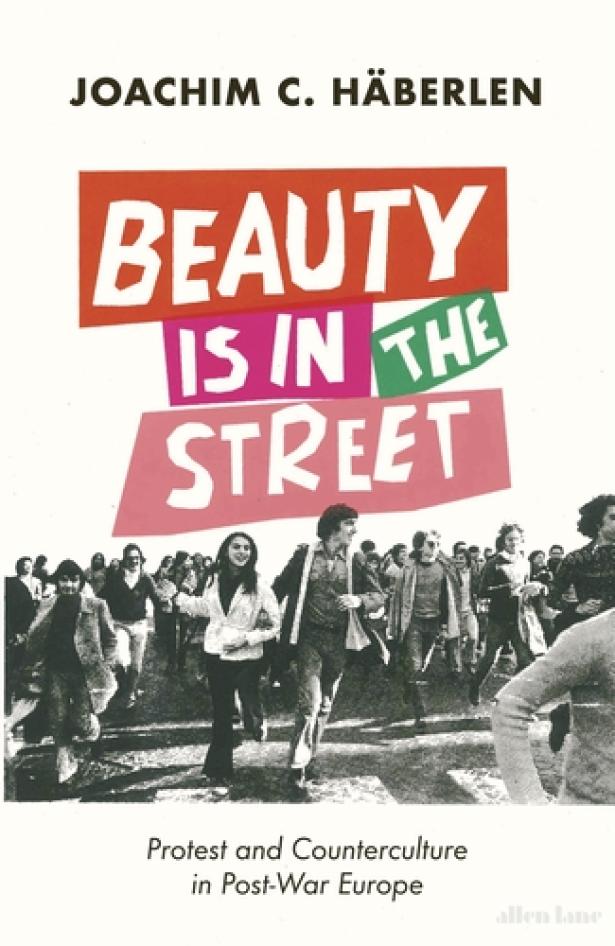Beauty Is in the Street: Protest and Counterculture in Post-War Europe
Joachim C Häberlen
Allen Lane
ISBN-13: 978-0241479377
“Human sacrifices are made daily to this idol of the idiots: car power,” went the statement issued in 1965 by countercultural Dutch anarchists and performance artists calling themselves the Provotariat.
Long before Ulez, 15-minute cities and Just Stop Oil, the Provos (nothing, it hardly needs saying, to do with Irish republicanism) were trying to end what one of them called “the asphalt terror of the motorised masses”.
The Provos argued Amsterdam city centre should be closed to cars and an armada of bicycles all painted white should flood the city. The bikes would be unlocked to provide the “first free communal transport”.
The initiative clearly didn’t compute for Amsterdam’s cops. They argued that “the bicycles were not locked and therefore invited theft” and removed them.
Karl Marx was out of date, thought many of these groups: it wasn’t religion that was the opiate of the masses, but consumer capitalism in general and the cult of the car in particular. “Choking carbon monoxide is its incense,” argued the Provotariat.
Indeed, the traditional heroes of Marxism, the proletariat, were no longer fit for revolutionary purpose, argued Herbert Marcuse, doyen of the New Left in his 1964 bestseller One-Dimensional Man. Subaltern groups – people of colour, women, gay people, hippies and anybody yearning to live beyond the strictures of white supremacist heteronormative capitalist norms – could step into the breach the working class had left.
It was these groups, Häberlen argues, who revolutionised Europe by fighting for legal abortions, gay rights, decent treatment of “illegal” immigrants and refugees, and otherwise stuck it to the man on both sides of the iron curtain.
The Orange Alternative mobilised the power of absurdity. On walls whitewashed by the authorities to cover up anti-state slogans during strikes and martial law in early 1980s Poland, Waldemar Fydrych and his mates painted little red dwarf figures. Police beat him up for this outrage before asking: “What is it with dwarves?” “I want a revolution,” he replied, bruised but deadpan. “A revolution of dwarves.”
Fydrych and his friends distributed paper red hats to passersby while others danced, played guitars and sang: “We are the dwarves/ Hop sa sa/ Hop sa sa/ Our houses are under mushrooms.” “Anybody who doesn’t take off their special hats must show their ID papers,” said a police officer into a megaphone. Once more the cops had lost the plot.
Häberlen’s suggestion is that the collapse of the Soviet bloc was made more likely by such micro-demonstrations of state silliness. He may well be right. But flower power and transgressive liberation could mutate into oppression – and worse. In a chapter on street violence and terrorism, Häberlen concludes that rather than envisioning a different world, the likes of the Baader-Meinhof Red Army Faction in Germany and Italy’s Red Brigades “began to mirror the state, its language and institutions”.
Häberlen is good on the sliding scale of countercultural protest – from putting flowers in soldiers’ rifles on the one hand to political murder on the other. In the middle, he finds the euphoria of fighting in the street. Rioting is a joyful event if you are doing it right, argued a 1960s West Berlin group called Fighters of the Erupting Sado-Marxist International. Their greatest pleasure was destroying what made life unbearable: “Commodities, cars, concrete traffic, fragmented time…”
Much of his focus is on Germany, which means, for instance, there is a long, gripping analysis of Berlin’s techno scene, but nothing on its near contemporary Britain’s 80s rave culture, though the latter was, if anything, no less antinomian.
Some of his analysis does feel a bit threadbare and tokenistic. Chapter 11 is about women and gay movements, for instance, shoehorning different struggles together. That said, his analysis of Greenham women’s peace camp, which from 1981 until 2000 opposed the stationing of cruise missiles in Berkshire, is wonderful and touching, not just for its analysis of non-violent political protest, but for realising that these feminists did something extraordinary in Thatcher’s Britain, creating a queer space where women could try out practical alternatives to living beyond the feuding ideologies of cold war superpowers.
He’s very good too on squatting, writing passionately about those that moved into derelict buildings in neighbourhoods near the Berlin Wall and experimented in collective living. In Kreuzberg, this involved putting up long tables in the streets for communal meals, abolishing private rooms and undermining the traditional bourgeois family. Hell for some, but a vision of heaven for others.
What is the legacy of these movements? On one hand, Häberlen rightly points out that, far from overthrowing capitalism, they helped it mutate and survive, since their anti-hierarchical ideas helped change work culture. Instead of offering keys to executive washrooms, companies now instil loyalty with putatively democratic beanbags and breakout zones.
And yet there is still something inspiring about the aspirations of much countercultural protest, argues Häberlen. Such as? “A world without sexist and racist discrimination, a world that protects and values nature rather than exploiting it for profit, a world in which residents have a right to their city, to affordable housing and public space.”
He has a point: imagine cities without locks on bikes, cars or front doors, with public spaces where you can take a seat without being required to buy stuff and where you might encounter people beyond your echo chambers. A dream, perhaps, but one that still sounds worth fighting for, even beautiful.


Spread the word